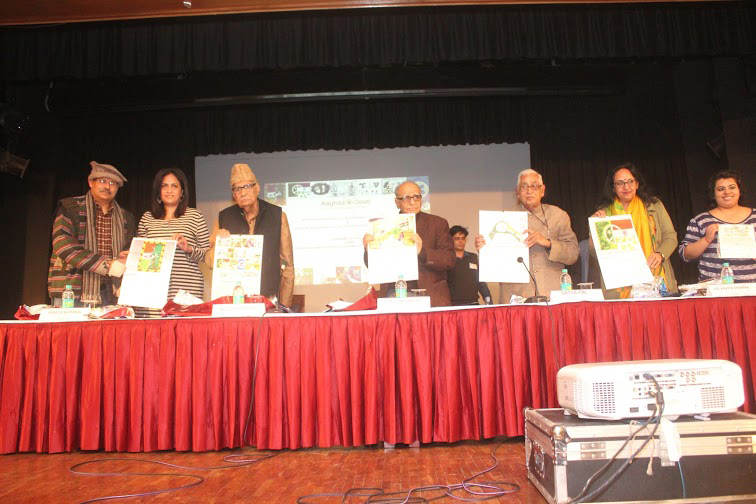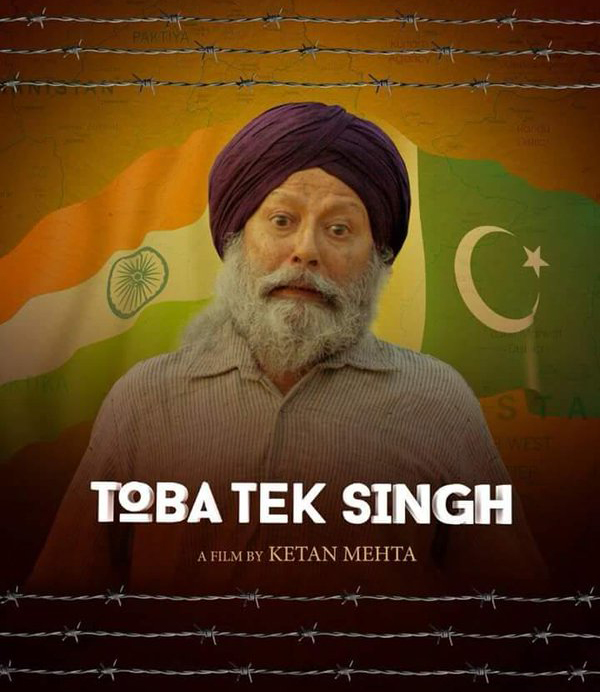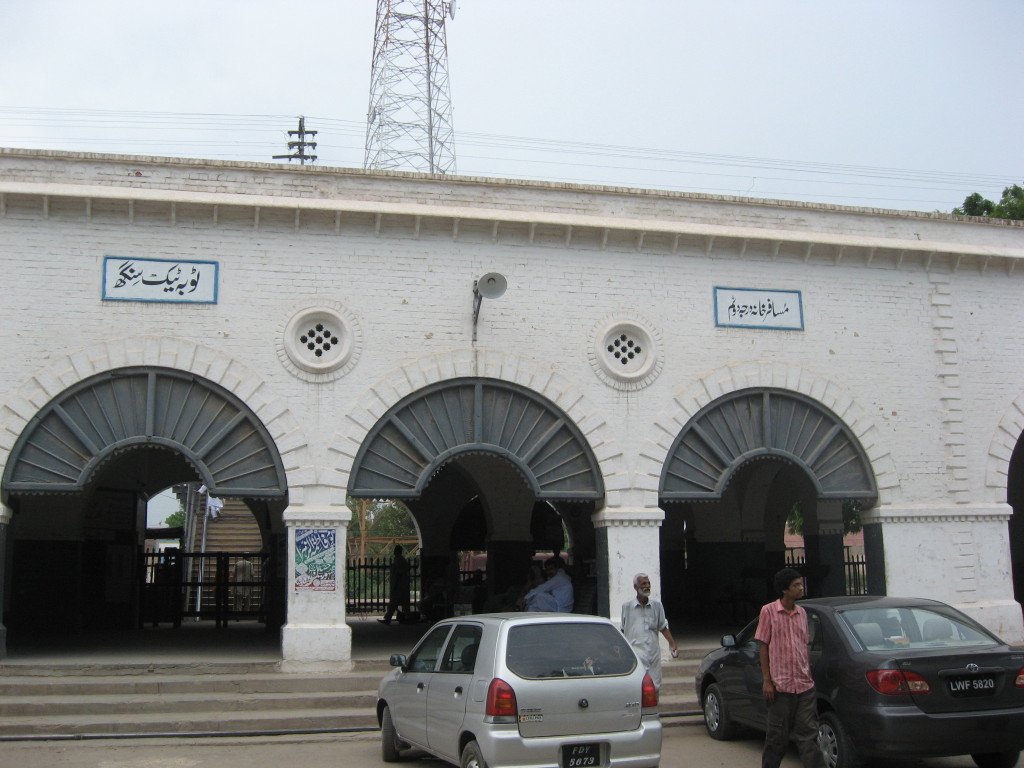Bringing alive the memory of Toba Tek Singh
One had read and heard about Saadat Hasan Manto’s legendary short story, Toba Tek Singh but it was purely the lure of watching actor Pankaj Kapur enacting the role of the protagonist that pushed me to go and see a film based on the story. The short film by the same title, directed by Ketan Mehta was screened at the India Islamic Cultural Centre in Delhi some time back.
It was a part of Aaghaz-e-Dosti, an initiative of India-based Mission Bhartiyam and Pakistan-based The Catalyst – TC. Both are young organisations run by students or young professionals who work for Indo-Pak friendship in addition to their studies or work.

The Delhi launch of the Indo-Pak peace calender at Aaghaz-e-Dosti.
Photo credit: aaghazedosti.files.wordpress.com
Coming back to Manto’s story and the film, I set out on my own research about Manto’s story both before and after watching the brilliantly made film. Surprisingly, though the few people I spoke to claimed to have read the story as part of their school syllabus or otherwise, there was still this mystery around Toba Tek Singh. Was he a man or a village? It turned out, that I was among the more informed ones and knew for certain that Toba Tek Singh was indeed the name of a village and not Manto’s protagonist. Incidentally, I too, discovered that the protagonist’s name is Bishen Singh only after seeing the film.
My Google search also showed that although Manto’s story was fictional, Toba Tek Singh is for real. Those who have read the story know how Manto portrayed the pain of partition through the characters in the mental asylum of his story. After partition, the governments of both India and Pakistan decided to divide the inmates of the mental asylums in both the countries. It was decided that all the Muslims would stay in Pakistan and all the Hindu and Sikh inmates would stay in India. Since Manto’s story is based in the mental asylum of undivided India’s Lahore, the Hindus and Sikhs have to be sent to India.
Among them is Bishen Singh, who has not slept for 15 years. His feet and ankles are swollen because he spends the day walking around in the asylum, asking, “Toba Tek Singh kithe hai?” (Where is Toba Tek Singh?). At best he leans against a wall at night. He used to be a landlord in his village but lost his mental balance following a property dispute. His family leaves him in the Pagalkhana and comes to meet him once in a while. But the trauma of leaving his village haunts Bishen Singh day and night and he loses his sleep. On the day the inmates are to be exchanged at the border, the asylum staff convinces Bishen Singh that Toba Tek Singh is indeed in Hindustan and that is where he is going. At the border, when his name is being entered, he asks the Indian official, “Toba Tek Singh kithe hai?” to which the official replies, “Of course in Pakistan.” A delirious Bishen Singh rushes back to the other side only to be pushed back. Since he is a harmless person, the officials let him be for some time and continue their work. Moments later, they hear a loud scream and find Bishen Singh, lying face down on No Man’s Land, with a barbed wired on the both sides. The man who had not slept for 15 years finally found his resting place.
In the film, Pankaj Kapur is brilliant as Bishen Singh. Toba Tek Singh reaffirmed my faith in Pankaj Kapur’s talent, which had taken a beating after watching him play a character unworthy of his acting stature in a dud commercial movie a few months back. Vinay Pathak, as Manto, the sutradhar and warden of the mental asylum, has given a poised performance.
A peep into history
Toba Tek Singh, the village, was named in the memory of a Sikh saint. Before Tek Singh came and settled here, it was a deserted place by the pond (toba in the local language). He made it a point to serve thirsty passersby from this pond. Years later, his act of charity founded the city, which is now named after him, Toba Tek Singh. It was developed by the British towards the end of the 18th century when a canal system was built. People from all over the Punjab (currently Indian and Pakistani Punjab) moved there as farmlands were allotted to them. Most of the people who migrated there belonged to Lahore, Jalandhar and Hoshiarpur districts. (Source: Wikipedia)



















